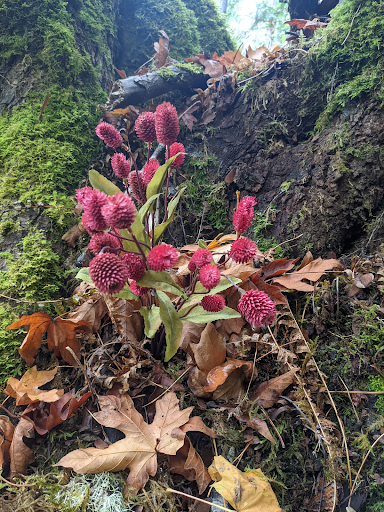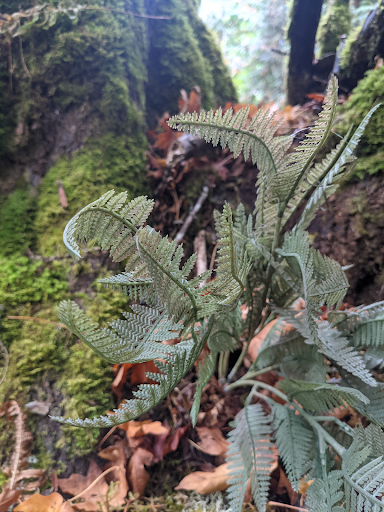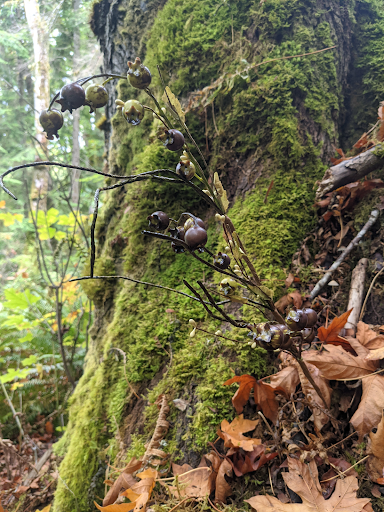Common Herbs of The Lorassaint
Countless varieties of herbs grow within the forest, with endless secrets to offer the educated. There are some few staples of apothecary’s recipes that grow in abundance, however, and offer reliable sources of the forest’s medicine.
These herbs, unlike the infinitely varied wildflowers, produce consistent effects and are always recognizable by their uniform structures (props used.)
Gabby’s Blood, Martyr’s Blood
Anesthetic Excitant Irritant
It is said anywhere this flower is seen to grow is a place a martyr’s blood has been spilled. The plant is largely attributed to our own Saint Gabrielle The Defiant, the first of its kind said to have grown from her open wounds following death, a symbol from God that her body was consecrated and pure, immune to the corruption of the darkness she fell struggling again.
Common Use
Phial of Perseverance
A common excitant for the warriors of Luisant. After they imbibe no fear nor pain can deter the warrior, for good or ill. Few seem able to maintain clear appraisal of their own weaknesses while aided by the martyr’s spirit. The phial of perseverance leaves no room for doubt.


Sweet Root, Sweet Leaf
Purger Purger Restorative
Nearly every member of the village can attest to the utter lack of sweetness this herb offers. In truth the name is a long standing ruse perpetuated by parents immemorial to fool nauseous children into willingly ingesting decoctions of this plant. A cruel and bitter betrayal, for their own good.
Common Use
Long Night
Named as such for the long night any parent giving this decoction to their ailing child can expect. The syrupy consistency is vaguely reminiscent of molasses though devoid of any true sweetness. It serves as a reliable response to an upset stomach. Those who partake retch and deficate until their body is cleansed of impurities, and their humors begin to balance.
Regal Oak
Addictive Clarifier Hallucinogen
Offshoots from the base of saplings throughout the Lorassaint that attract the exclusive desires of what survivalists call Oak Thralls: squirrels and other rodents that have developed a dependency on the Regal Oak. Some Oak Thralls have been seen defending producing saplings aggressively while leaving the tree’s plumper acorns higher up untouched.
Common Use
Perron’s Sap
A resin with a robust nutty scent. Those who partake experience near religious acceptance and often dependence on a belief of the makers will.


False Death False Ferns
Mind-Burner Paralytic Soporific
Deceptively similar to other innocuous ferns in the forest, the false fern harbours a dark legacy of rendering unwary harvesters vulnerable in the depth of the forest. Stories of those who imbibe the herb in abundance claim that even after regaining consciousness and stumbling back into town a bit of the night still haunts the persioned victim.
Common Use
Drought of The Night
Rendered down the herb produces a potent drought that leaves those who imbibe it vulnerable for near to a bell but can leave behind haunting thoughts to torment the poisoned for years after.
Feasting Kings Hunger
Addictive Intoxicant Pleasant
These delicious berries hide within them a menacing seduction. Any driven to consume these berries in large quantities risk inviting into themselves the gluttony of the Feasting King, forever may he rot in despair. Many of our community have grown plump on the berries these produce, stretch marks widening to no lasting satisfaction of the stomach. In almost every such case the afflicted experience great misfortune while mindlessly harvesting these plants, often never to be seen again. When they do return they are usually another crazed bog ghast, now hungry for more than berries.
Common Use
Kings Appetite
The extraordinary and dangerous drug derived from these berries does wonders to offer solace from mystery and despair, but can just as easily become a source of these tragedies when abused.


Mage’s Trick, Marionette
Apathetic Intoxicant Undetectable
This herb has long since held the name “Mage’s Trick” on the logic that no person might listen to or agree to the words of a mage without having been dosed with a great quantity of these berries. In the last century the noble family has pushed for a name shift to “Marionette,” taking objection on account of their own trust and dependence upon their attending mages. The push has largely been met with humour which has only served to make the original naming more memorable.
Common Use
Mage Wine
Once properly processed this medley of berries becomes a wilderly intoxicating drug, without flavor or scent, that brings those who imbibe into a suggestable state.
Fairy Seed, Fae Hips
Foul Stimulant Stimulant
Fairies are attributed with spreading this common herb. It’s known to harbour a truly spiteful taste to mortal tongues, but renders fair folk into a euphoric state. However, those who do acquire a taste find themselves imbued with the nimble touch found within fairy fingers.
Common Use
Wyld Brew
A bitter decoction often abused by jittery pistoliers and high strung thieves.


Cour Elan Gold
Fortifier Fortifier Fortifier
Among the common herbs the Cour Elan Gold is one of the least common, having only been found around the mouth of the now closed Cour Elan mine. At the start of the plague it was believed this variant shelf mushroom could aid in providing protection from the blight afflicting our community. Be it our wickedness or the spite of the forest the plague ravaged us despite this miraculous being.
Common Use
Miners Delight
Prepared and cooked into a hearty breakfast this mushroom can impart incredible stamina in workers, extending the time they can remain within the foul air of deep mine shafts. Just as many miners have fallen ill due to these mushrooms as have benefitted from them, however, causing the Mervaille lineage to take a firm stance against the preparation and consumption of Miners Delight, claiming there are much better processes to derive value from Cour Elan Gold.
Beginner’s Luck
Nimblemind Restorative Relaxant
Though theoretically common these intriguing glowing mushrooms are incredibly difficult to spot in the daylight hours. Even at night their unique glow only seems to shine under openings in the forest’s canopy. In direct moonlight the smooth skin of the mushroom sparkles like no other. More peculiarly there’s a superstition that few in the community could deny, that Beginner’s Luck is much easier found by untrained eyes, or those new to seeking out these unique and potent mushrooms. Mists often settle heavily around them, making searching out these mushrooms regularly a risky prospect, to say the least.
Common Use
Moon Tears
Named partially for the pools of moonlight its base components can be found within, and partially for the telltale tell of the droughts users, watery tears shimmering over glassy eyes. The lunatics who can secure a steady supply of this miraculous drug have been known to stay awake for days and nights on end, mind as sharp at night as a fresh academic. Following the well of energy and focus they enjoy comes a dryness of their eyes, a clumsiness of the tongue and a throbbing migraine when overstimulated.


Laughing Heads
Immune-Shock Neurotoxin Steroid
Not flowers themselves, these mushrooms flush on hosting Fairy Seeds after the pods have opened and seeds scattered. The peculiar formation of the open pods and the expanding mushrooms fruit form an eerie semblance of grinning faces. They gain their name from the unsettling sound of laughter they create when moist and rustled together in the wind.
Common Use
Though a common mushroom, there is no common use for them. Only advanced apothecaries or poisoners have a notable interest in these.
